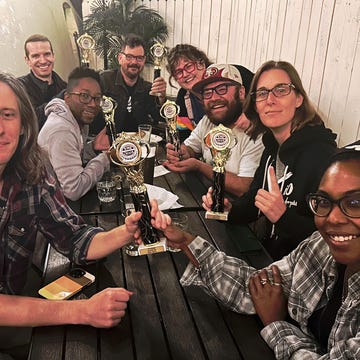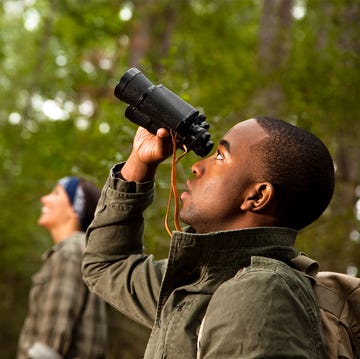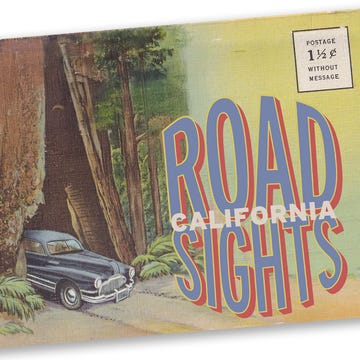On that frantic rescue weekend, one little girl stood out. She had liquid brown eyes that held my gaze as she leaned against my legs, her black-and-white frame melting into me. I had expected shyness or fear from a dog just uprooted from all she had ever known. Instead, I had been gifted with this eloquent gesture of trust. Of course I was smitten. Who wouldn’t be?
Her racing name, StiksNStones, did not fit such a gentle creature. Four years old, Stiks was among the dozens of greyhounds being evacuated from Tijuana, where the last dog-racing track in the region had abruptly closed after 77 years of running greys. Stiks spent more than 20 hours a day languishing in a kennel cage, like the other greyhounds at Caliente racetrack. The dogs typically were let out only to take care of business and to sprint on race days.
This article appears in Issue 32 of Alta Journal.
SUBSCRIBE
Now, on a bright July morning, she was thrust into the bewildering chaos of an event known as Homecoming, an all-volunteer operation that resembles a backyard MASH unit. Dogs fresh from the track are coaxed and soothed through an assembly of makeshift tents and care stations as they begin their transformation from racing machines to pampered couch potatoes.
Stiks eagerly welcomed head rubs as she waited in line for a series of firsts: shampoo and a pedicure, tick checks and ear cleaning, pokes and prods in the medical tent. The experience can be overwhelming for nervous new arrivals, but Stiks was game. She even passed the test in which each greyhound has a (muzzled) encounter with a scruffy little barker and a snarling cat to see how it reacts.
I hadn’t planned to take in another greyhound, not even a charmer like Stiks. A trio of 75-pound dogs already more than filled my family’s Santa Barbara home: our greyhounds, Valiant and Dottie, and the latest addition, a young collie rescued from a hoarder. And we would have continued our break from fostering if not for the barrage of SOS emails and social media posts: Caliente! Closing! One hundred fifty greyhounds stranded! Help!
Several days later, my husband and I found ourselves driving down to Los Angeles and anxiously circling a La Habra Heights neighborhood, searching for somewhere to park. We were surprised to see so many cars cramming the hilly roadsides and a line of longtime adopters, friends of ours along with unfamiliar faces, trudging up to a sprawling horse property turned canine triage center.
The Greyhound People, as some call us, had mobilized this Saturday and throughout the summer from every corner of Southern California as greyhound racing officially died on the West Coast and edged the sport further toward extinction in the United States. As rescuers scrambled to beat a near-impossible deadline, we hurried to join them. But for another pair of volunteers, it had already been a long, tense day before we even hit the road.
THE LAST RESCUE
Jay Shields drags himself out of bed at 3 a.m. Early rising is nothing new after so many years of rescue work. He knows this is the best time to start the drive to Tijuana’s racetrack, where his mission is to pick up unwanted greyhounds—those injured or otherwise unable to earn their keep by finishing in the money. While the city sleeps, Shields finds shorter lines at customs checkpoints and fewer questions about his leggy cargo.
A retired insurance agent who has led border expeditions for the nonprofit group GreySave for more than a decade, Shields is a legend in California’s greyhound circles. With his raspy voice, swept-back gray hair, and uniform of khaki shorts and a black T-shirt that reads “Dogfather,” he’s instantly recognizable at the group’s monthly Homecoming meetups. He earned the nickname Captain Hook not for his take-no-prisoners demeanor but for his relentless approach to battling a stubborn plague of track life: hookworms. Shields builds charts with each rescue dog’s treatment schedule, then mails customized pill kits to new adopters before following up with regular check-ins for weeks, sometimes months, as he did for our girl Dottie, who had a virulent case.
Shields orchestrates these runs from his Chino home with the same single-minded precision, aided by careful planning, relationships nurtured over the years, and a stash of pastries to negotiate any rough spots. “Yeah, the big box of doughnuts,” he says. “That works wonders.”
Before this final Saturday mission, Shields maneuvers in the darkness around his own sleeping greyhounds, Missy, Daxton, and Monte. He grabs a doughnut box and ambles out to his Ford van. Shields, who is now 81, has been hobbled by a bad back and knee, but that doesn’t stop him from sliding behind the wheel. By 3:15 a.m., he is cruising south on the 15 freeway with an experienced buddy, longtime newsman and GreySave volunteer Rich Nelson, riding shotgun.
Once over the border, Shields will stick to main drags, driving slowly to navigate erratic red lights and avoid cops who use traffic stops to shake down tourists. Shields recalls one trip when his wife, Stephanie, flagged news reports about a gruesome street crime. “They had a drug cartel hit the night before and hung three people from a bridge that we used to go over to get to the track,” he says.
Most trips, though, are uneventful, and Shields prides himself on being unflappable. Today is different. The Caliente racetrack closure two weeks earlier left dozens of greyhounds to an uncertain fate. By car, van, and truck, rescue groups started moving greyhounds across the border, an urgent effort complicated by looming U.S. restrictions making it more difficult to bring dogs into the country. Rescuers believed the new rules meant they had to get every hound out of Tijuana by August 1; after that, they might not get out at all.
Today, the border crossing is fast. Just past 6 a.m., after driving three miles across Tijuana’s narrow streets, Shields turns into the Mediterranean-style Caliente racetrack. He and Nelson are shaken by what they see: The kennel in shambles. Rows of double-decker cages gaping open, broken and stripped bare. Doors twisted and ripped off hinges. Everything of value carted off, salvaged for scrap or sale. Only the dogs remain.
There is no sign of the longtime kennel manager, Manuel Pérez, a partner and friend for many years—Shields would often bring sweets and care packages for his family. Today, the usually raucous kennel area is nearly deserted, barren and hushed in the early-morning sun.
“Like a ghost town,” Nelson says. “Really sort of haunting.”
LOVE AFFAIR
With their sleek bodies, long legs, and deep barrel chests, greyhounds are known as the world’s fastest dogs. Muscular and lean, with barely any body fat, these dogs can sprint up to 40 miles an hour. Many are raised on U.S. breeding farms and trained to chase a mechanical lure—an artificial rabbit—to the finish line. Each racing greyhound pup has stats (date of birth, birth order, registration number) tattooed in its ears.
Greyhounds have docile, easygoing personalities. They are happy mingling with their own breed or sight-hound cousins (like whippets and borzois) and are serious power nappers. These traits make them appealing to the racing industry and pet lovers alike.
I joined the greyhound world in the spring of 2011, when my family, which
already had a rescue collie, fell for an elegant black ex-racer named Simon who had shattered his right front leg on the Tijuana track. GreySave enlisted Irvine veterinary surgeon Christopher Eich to repair the leg with a metal rod, and the operation was a success: Simon could still fly like a champion. I was later told the group spent $6,500 on his care.
Before we could bring Simon home, GreySave sent an inspector to our house. He stepped onto the front porch with his own greyhound at his side and scowled when he announced, “I turned down the last two families I visited.”
Without pausing for any chitchat, our visitor roamed the house and yard with the intensity of a crime scene investigator. He grilled our daughter, then let it be known he was miffed that our son was at a friend’s house and unavailable for questioning. Finally, the inspector shared his verdict: We had passed. Simon could join our pack.
This was my introduction to Jay Shields.
My family went on to adopt five more greyhounds—Pirate, Valiant, Dottie, Finn, and a puppy named Romeo—and to foster other dogs. I became known as the Greyhound Lady and found myself regularly fielding questions on walks: Aren’t they too hyper? (No.) Do you need a giant yard? (No.) Do they need to run all the time? (Only to their bowls.) Greyhounds happily settle into sedentary life and eagerly learn to play. The transformation from racing dog to family dog is magical, and it’s why I began volunteering at Homecomings, both in California and when I lived in Seattle. It’s also why adopters like me end up with a pack. Greyhounds are like potato chips. You can’t have just one.
And for years—centuries, really—there were plenty to choose from. Greyhounds are an ancient breed, the only one named in the Bible, writes Jim Jeffers, a retired Cal State Dominguez Hills history professor who also served on the GreySave board. Greyhound racing began in Emeryville, California, in 1919 after barber and sports promoter Owen Patrick Smith invented the mechanical lure that could be run in a circle for the hounds to chase but never catch. Smith eventually owned 25 tracks around the nation, including ones in Montana, Oregon, and Florida. “Greyhound racing became very popular with the working classes in America and Britain,” writes Jeffers on the websites for GreySave and Fast Friends, another adoption group. “Before long it spread to Ireland and Australia as well.”
Tijuana’s Caliente racetrack, which featured thoroughbred racehorses like Seabiscuit during the Depression era, started running dogs in 1947. The track became a cross-border part of the U.S. racing circuit and, in the 1990s, a steady pipeline for greyhound adoption.
The dog-racing industry, however, faded in recent years as online gambling flourished. Public concerns about animal welfare and reports of track abuses also contributed. Most U.S. states have moved to ban dog racing, including industry-leading Florida, which had around a dozen tracks operating in 2018. In a fierce political battle, voters there overwhelmingly decided to shutter every track by 2020. “It wasn’t a Republican thing, and it wasn’t a Democrat thing,” Christine Dorchak, president and general counsel of the Grey2K adoption group, told the Guardian. “It was a dog thing.”
In the early months of the pandemic, hundreds of Florida greyhounds were shipped to Tijuana, sparking a dramatic surge in dogs taken in for adoption in Southern California. Today, only two greyhound racetracks remain open in the United States, and both are in West Virginia. “Greyhounds are born runners,” said Governor Jim Justice as he vetoed a bill that would have ended greyhound racing and eliminated up to 1,700 jobs. “I hope to keep them running in West Virginia for a very long time.”
Two years ago, Shields was watching the Saturday matinee races at Caliente in a nearly deserted stadium built to accommodate 5,000 spectators. “The only thing keeping the dog racing going was the simulcast, where they sent out the races to other casinos in Vegas and wherever else,” he says. Remote betting helped keep the track afloat for a while, but in the end, it wasn’t enough. In December 2023, Caliente announced that racing would shrink to two days a week. The sport officially ended there on July 14, 2024.
A FAST BREAK
The summer bombshell of Caliente’s closing landed while the GreySave group was reeling from the death months earlier of founding president Cathy Kiburtz, a former controller at NASA’s Jet Propulsion Laboratory. Then another devastating loss rocked the group. Eleven days before the track shut down, Shields’s 76-year-old wife, Stephanie, passed away too. The couple had been married for 49 years, raising a daughter and three sons.
Sandy Hightower, GreySave’s new leader, immediately reached out to Fast Friends director Joyce McRorie to join forces, along with San Diego County’s Operation Greyhound, for a massive rescue effort.
Shields navigated his grief the only way he knew how: He climbed into his van before dawn to make a final run to Tijuana.
At the track that morning, Shields and Nelson were relieved when the only remaining kennel operator appeared amid the ruins to greet them, along with a helper. The kennel team quickly hoisted eight greyhounds into the van and handed over pedigree papers, vaccination records, and proof that each dog had received a rabies shot in the past two days. Shields handed over his box of doughnuts in appreciation. Within 10 minutes, the dogs—Dancin Caitlin, JB Running Reba, CET Cacklin Kathy, JB Donna Dogface, AJN Lil Sister, BGR Creepin, JB Butter Cup, and BGR StiksNStones—were jostling for space in the van. Each wore a muzzle for safety.
As Shields and Nelson waited to cross the border, vendors walked between the rows of cars, selling food. Kids juggled for money. Border Patrol agents strolled by with drug-sniffing dogs, whose presence got all eight greyhounds standing at attention at the van’s windows. “The greyhounds are always like, ‘Oh, wow, what’s that? Who’s that?’ ” says Nelson. “And then once you get through the border and you get on the freeway, they lay down and there’s a rhythm to the driving. The air is cool. It’s quiet.”
“I remember the first time we saw a greyhound was when Stephanie and I were in Sedona for vacation and they had the lighting of the luminaries,” Shields says. “It was wall-to-wall people, and some guy came walking through with two greyhounds in tow. And those greyhounds were the most calm dogs. It was unbelievable. And we looked at each other and decided, man, that’s a dog!”
When the couple joined GreySave in 2006, they started bringing fosters to their office in Placentia. Once greyhounds experience life away from the track, they become attached to their humans and are happiest snoozing beside them. During the week, whenever dogs broke a leg at Caliente, the couple would make impromptu trips to Tijuana to bring them back for immediate medical care at a specialty veterinary hospital in Irvine rather than make them wait for the monthly Homecoming run. “Of all the things that Stephanie enjoyed, she got in the front of the line to go,” Shields says.
Later in retirement, Jay and Stephanie began hosting Homecoming at their Chino home. She’d crack jokes as she handed out assignments to the early-morning crew: a doctor, a retired nurse, teachers, and serial adopters like me. We’d organize a medical station in the garage, set up a bathtub, and assemble pens and blanket beds across the yard for the incoming racers, who’d arrive with their beautiful faces pressed against the windows of the van.
As Homecoming host, Jay Shields was all business and grump—except when he was interacting with the greyhounds and fitting them with martingale collars and tags. He’d settle into a corner patio chair, and the tough-guy Captain Hook persona would vanish, and a sweet, heart-on-his-sleeve man would appear as quick as a greyhound turning into the homestretch.
Shields would cuddle each dog and coo like a newborn’s dad. Fresh from the track, their stomachs full of good food and their ragged coats still damp from baths, the hounds would lean into him with a sigh and accept his gentle strokes as he murmured, “Good dog, good dog.” Homecoming’s magic doesn’t just work on the hounds.
HOMESTRETCH
When Shields and Nelson pulled the van into McRorie’s La Habra Heights driveway at lunchtime, the waiting throng of volunteers converged to welcome and tend to the new arrivals. It was an exhausting day for hounds and humans alike, stretching well into the night.
My husband, Ed, and I didn’t leave empty-handed: The sweet cookies-and-cream girl StiksNStones, our newest foster, curled up in my lap as Ed drove us home to Santa Barbara. I was in heaven.
In the end, all of the Tijuana greyhounds were rescued before the deadline, among them a petite red fawn named Bella Sunshine, who became a Homecoming celebrity because of her long career: She had run more than 500 races. “There were a lot of older dogs, a lot of five-year-olds, but actually they were in better condition than I thought they’d be,” says Hightower, a science teacher who has fostered 250 greyhounds. In addition to arranging homes in Southern California, Hightower has coordinated placements with groups in Texas, southern Arizona, and Salt Lake City.
The end of the sport means former racing greyhounds are in short supply in Southern California. Adoption groups elsewhere are importing ex-racers from tracks overseas. Hightower says GreySave has changed its focus to become more of a support group, helping existing adopters and finding homes for mixes raised by backyard breeders and greyhounds leaving the now-shuttered Hemopet blood lab in Orange County. “We do get offers to take them from Ireland; we get offers to take them from Australia,” she says. “But we as a board decided that was not something we were going to make a priority. There are dogs in the U.S. that need to be saved.”
For me, the hardest part of fostering is letting go. So it was a bittersweet surprise when Hightower called to say she had a perfect home for StiksNStones just days after Homecoming. An Orange County family who had lost both their greyhounds wanted to meet her. We headed back down the 101 with our foster girl. When I met mom Jackie and saw the giant fluffy dog beds, the grassy backyard, and the sack of salmon-and-sweet-potato kibble waiting in the kitchen, I knew she would thrive there. It is a perfect match: Her name is now Styx, and she has two teenage boys who adore her and a young borzoi playmate, too. In November, Styx joined my pack at the annual Greys of El Dorado picnic in Long Beach, and she was sweeter than ever, joyfully romping with her new family.
I shared the adoption news with Shields, who had been so determined—for himself and for Stephanie—to help bring Styx and the other last greyhounds home from Tijuana.
Caring for greyhounds in need, the desire to give these unique hounds a place to go when the racing was done, a chance to be a pet, to be cherished and loved, had been the couple’s life and passion for so many years. Captain Hook needed to complete the job.
“They deserve it,” Shields says. “I haven’t found one yet that didn’t enjoy retirement.”•
Donna Wares is a writer, editor, and live-event producer. She founded the L.A. Times Book Club and served as managing editor of the Orange County Register.















